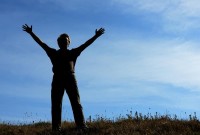- Home
- Business Processes
- Industry Knowledge
- Aerospace Industry
- Automotive Industry
- Banking Domain
- BFSI Industry
- Consumer/ FMCG Industry
- Chemicals Industry
- Engineering & Construction
- Energy Industry
- Education Domain
- Finance Domain
- Hospitality Domain
- Healthcare Industry
- Insurance Domain
- Retail Industry
- Travel and Tourism Domain
- Telecom Industry
- Leadership Skills
- eLearning
- Home
- Leadership Skills
- Leadership Theories
- Katz’s Three-Skill Approach
Katz’s Three-Skill Approach
Robert Katz identified three leadership skills called - technical skills, human skills, and conceptual skills as the basic personal skills essential for leadership. Leaders must possess these three skills that assist them in optimizing a leader's performance. Technical skills are related to the field, human skills are related to communicating with people and conceptual skills related to setting the vision.
What is Katz Three Skill Approach?
The skills theory of leadership emerged as a prominent theory in 1955 when Robert Katz published his paper "Skills of an Effective Administrator" in the "Harvard Business Review." The research was based on Katz’s own first-hand observations of executives in the workplace and on field research in administration. He suggested in the paper that effective administration or leadership depends on three basic personal skills: technical, human, and conceptual. He identified these three skill areas as the most important skills that the executives had in common and used on a regular basis.
What are the three Skill Areas?
Katz identified three skills; technical, human, and conceptual as the basic personal skills essential for leadership. Technical skills related to the field, human skills related to communicating with people, and conceptual skills related to setting the vision.
Skill 1: Technical Skills:
As defined by Katz in 1955, ‘Technical skill is knowledge about and proficiency in a specific type of work or activity. It includes competencies in a specialized area, analytical ability, and the ability to use appropriate tools and techniques’. Technical skills play an essential role in producing the actual products a company is designed to produce. Having appropriate technical skills signifies that the person is competent and knowledgeable with respect to the activities specific to an organization, the organization’s rules and standard operating procedures, and the organization’s products and services.
Examples of Technical Skills:
For a Software Company the following skills or knowledge areas can be considered as technical skills; Knowledge of Unix/Linux Operating System, Java/C++/Perl Programming Language, MySQL/Oracle Database Management, XML - Extensible Markup Language, HTML Skills, etc.
In an accounting firm, the technical skills might include an understanding of generally accepted accounting principles, accounting principles, knowledge of commercial laws, knowledge of tax laws, etc.
Attributes of Technical Skills:
- Technical Skills refer to being knowledgeable proficient in a specific type of work or activity
- It is the ability to work with things
- Technical skill is proficiency, based on specific knowledge, in a particular area of work
- Technical skills are most important at lower and middle levels of management
- Technical skills are less important at upper/senior management levels
Skill 2: Human Skills:
As technical skills relate to the ability to working with things, similarly human skills relate to the ability to work with people. Human skills are people skills that enable the leader to work effectively with subordinates, peers, and superiors. It is the leader's expertise in interacting with others in a way that will enhance the successful completion of the task at hand. Consequently, leaders with higher levels of interpersonal skills are better able to adapt their own ideas to other people’s ideas, especially when this will aid in achieving organizational goals more quickly and efficiently. These leaders are more sensitive and empathetic to what motivates others, create an atmosphere of trust for their followers, and take others’ needs and motivations into account when deciding what to do to achieve organizational goals.
- Human skills refer to the ability to work with people
- It is being aware of one's own perspective on issues as well as the openness to hear and appreciate inputs of others on their perspectives
- Leaders adapt their own ideas incorporating good themes from those of others
- Create an atmosphere of trust where employees/followers can feel comfortable and empowered to contribute their best
- Human skills are important at all the three levels of management – Lower, Middle and Senior
Examples of Human Skills:
Some human skills that are generally considered important are effective communication (both verbal and written), motivating others, and creation a positive attitude, development of cooperation and team spirit, etc.
Skill3: Conceptual Skills:
As a leader grows higher in the organizational ladder, the expectations from him are to provide strategic direction, create the vision, and motivate the folks to dedicatedly pursue the organizational goals. These are Conceptual skills that allow the leader to think through and work with ideas. Leaders with higher levels of conceptual skills are good at thinking through the ideas that form an organization and its vision for the future.
- It is the ability to work with ideas and concepts
- Creating visions, strategic plans and setting direction
- These are cognitive, business, and strategic skills
- Ability to work easily with abstractions and hypothetical situations
- As leaders climb the career ladder, higher levels of conceptual leadership skills became necessary
- This skill is most important for top managers
- This skill is comparatively less important for middle managers
- This skill is least important for supervisory managers
- Necessary skill to climb the career ladder
Examples of Conceptual Skills:
Some conceptual skills that are generally considered important are creativity, decision making, wing to wing interconnectedness, thinking as a whole, strategic thinking, problem-solving, etc.
Advantages of Skills Approach to Leadership:
One of the major benefits of a skills-based theory of leadership is that it acknowledges that anyone can become a leader. Individuals only need to find relevant resources and work hard to develop the skills of a good leader. This is encouraging for people who are interested in gaining leadership effectiveness but do not possess the traits as proposed in other trait-based leadership theories. A skills-based leadership theory also provides a competency-based toolkit to organizations to recruit, train, and grow leaders in their organization by taking inventory of each potential leader's skills in the important areas.
Limitations of Skills Approach to Leadership:
Like other leadership models, The Skills Model also has its inherent limitations because the development of many of the skills might be dependent on personal traits, and based on individual personalities it might be easier or difficult for a person to develop certain skills. This model also focuses on identifying the skills rather than clarifying why some skills influence the leadership process.
Related Links
You May Also Like
-
The Hersey and Blanchard Situational Theory model suggests that a leader must adapt his leadership style based on task and relationship behaviors appropriate to the situation. Leadership style is dependent on the maturity level and abilities of followers. Under this model, successful leadership is both task-relevant and relationship-relevant.
-
In the field of communication studies, there are numerous models. No one model is suitable for all purposes and all levels of analysis. Some common models are known as Lasswell Model, George Gerbner Model, David Berlo Model, Shanon and Weaver Model, Osgoods Model, and Schramm Model. All these describe the four components of the communication process, namely, the source (communicator), the message, the channel, the receiver (audience).
-
Power is the ability to exercise influence or control over others. Leadership involves authority and it is very important for leaders to understand what type of power they're using. The 5 Types of Power in Leadership are Coercive power, expert power, legitimate power, referent power, and reward power. Authority is the right to command and extract obedience from others. It comes from the organization and it allows the leader to use power.
-
In this study of power, Raven identified five bases of power as coercive, reward, legitimate, referent, and expert. The 5 Types of Power can help you decide when it is appropriate to use a particular type of power in important situations. Leadership involves authority and it is very important for leaders to understand what type of power they're using.
-
Trait theories of leadership explain the leadership traits that have been studied to determine what makes certain people great leaders. The practical application of the theory is looking at how the leader‟s behavior affects their subjects.
-
The Path-Goal theory defines the characteristics of followers and organizational context and the corresponding leadership style best suited to these factors. A leader should adapt to a behavior that is most relevant for a given employee and work environment mix to achieve a goal. The application of theory drives increased employees' motivation, empowerment, and satisfaction resulting in increased productivity.
-
There are four characteristics of leadership that help us to understand the character of leadership as a concept. 1. Leadership is a process, 2. Leadership involves influence, 3. Leadership always occurs in a group context and 4. Leadership involves goal attainment. These are the four components that make up the character of the 'leadership' term and help us to define the leadership concept. All of these components of leadership have common characteristics.
-
Rensis Likert studied the patterns and styles of managers and developed four management systems known as Likert's management systems. These styles developed by him are known as Likert management systems. System 1 - Exploitative Authoritative; System 2 - Benevolent Authoritative; System 3 - Consultative and System 4 - Participative.
-
The two-factor theory also known as Herzberg's motivation-hygiene theory and dual-factor theory. This motivator-hygiene theory states that certain factors cause job satisfaction whereas certain separate factors cause dissatisfaction in the workplace. An organization can adjust these factors to influence motivation. These factors are respectively termed as motivators and hygiene factors.
-
Burns Transformational Leadership Theory
Transformational leadership theory has been defined by James MacGregor Burns as a process where both leaders and followers mutually raise one another to higher levels of morality and motivation. The concept of transforming leader works with teams to garner trust, respect, and admiration while reaching to higher moral positions. The transformational theory of leadership was developed while studying political leaders and how they use charismatic methods to attract people to the values.
Explore Our Free Training Articles or
Sign Up to Start With Our eLearning Courses

About Us
Learning
© 2023 TechnoFunc, All Rights Reserved










